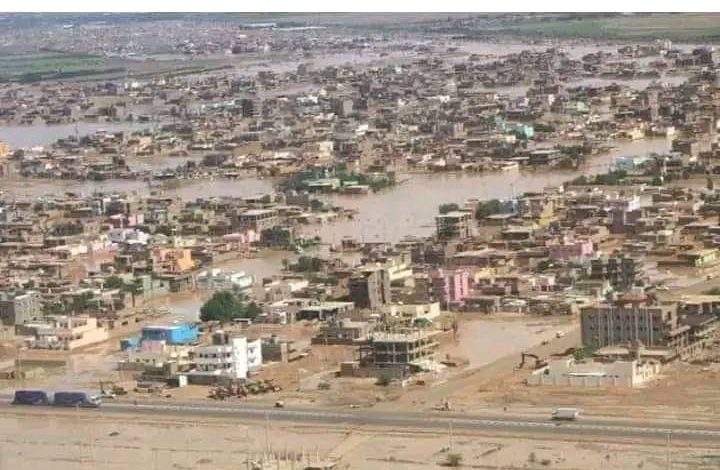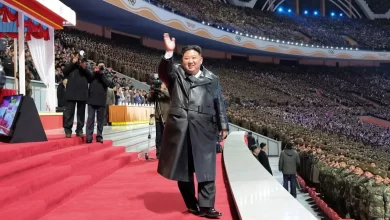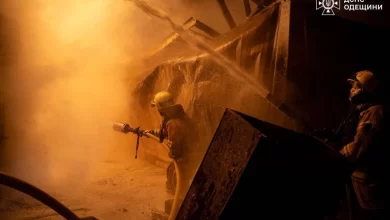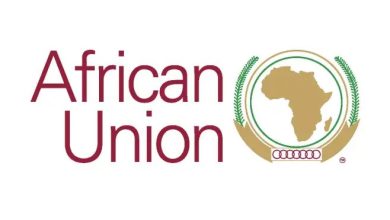News
Killing of 45 people in the River Nile and the Northern State due to Floods and Rains

Sudan Events – Agencies
The authorities in the Northern and River Nile States revealed a new death toll from the rains and floods, which amounted to 45 deaths and 656 injuries, while the floods swept through the city of Wadi Halfa in the far north of Sudan on Thursday.
Last Tuesday, the torrential floods destroyed hundreds of homes in the city of Abu Hamad in the River Nile State, which hosts the largest gold extraction centers in the country, and also caused severe damage to the markets.
The Sudanese Red Crescent branch in the River Nile State said in a report on Thursday that the rains and floods in the Abu Hamad locality and its administrative units caused the death of 34 people and the injury of 588 others.
The Red Crescent report counted the complete collapse of 24,104 homes, the partial collapse of 8,016 homes, and the collapse of 150 service facilities.
He affirmed that 96,606 families in Abu Hamad city and the surrounding villages were affected by the torrential floods and record rainfall that reached 142 mm last Thursday.
For its part, the Ministry of Health in the Northern State announced on Thursday the death of 11 people and the injury of 68 others, while 2,835 families were affected by the rains and floods that swept through large areas of the state.
A report by the Ministry of Health in the Northern State confirmed that more than 2,488 homes were partially collapsed and 346 homes were completely collapsed, in addition to the collapse of 357 toilets and 18 government facilities, and the damage included 54 areas across the state.
He pointed out that these statistics include the period from the beginning of autumn until Thursday.
Large parts of the Northern State were exposed on Thursday to heavy and moderate rainfall that led to torrential floods, which caused the collapse of dozens of homes and public facilities.
Floods hit the Northern State for the second time in less than a week, focusing on Wadi Halfa locality and the cities of Dongola, Merowe, Ad-Dabbah, Al-Golid and Al-Burqeiq in a rare precedent.
The Technical Chamber for Autumn Emergencies at the Ministry of Health in the Northern State confirmed that the rapid intervention teams will continue their field work, in addition to continuing interventions to avoid damage, epidemics and diseases and to emerge from this year’s autumn with minimal losses. It also confirmed that areas in Halfa, Merowe and Ad-Dabbah were severely damaged.
The chamber called on citizens to take the necessary precautions and follow the instructions that protect them from the damage and repercussions of the autumn.
In the same context, eyewitnesses in Wadi Halfa city said, according to “Sudan Tribune”, that the floods reached the outlying neighborhoods in Wadi Halfa city, causing great concern among citizens, and most of them went out to the streets for fear of the floods.
In North Darfur State, the emergency room of Abu Shouk camp for displaced persons in El Fasher, the state capital, said in a press release today that heavy rains caused the collapse of more than 350 homes, either completely or partially, in Abu Shouk camp, in addition to injuries among the camp’s residents.
The room warned that about a quarter of the residents of Abu Shouk camp are at risk of home collapse due to the lack of drainage of rainwater, and appealed to international and national organizations to urgently provide shelter materials for the victims.
In addition, the Autumn Emergency Room of the Sudanese Ministry of Health revealed that the number of states affected by the autumn season has risen to 9 states and localities to 37, with 6,200 families affected. It said that the statistics of affected families do not include Abu Hamad and Beheira localities.
The response department report obtained by Sudan Tribune confirmed that the most affected states are the Northern States, both in terms of the number of injuries and deaths among citizens, as well as the total and partial collapse of homes, until Wednesday, followed by the states of North Kordofan, Kassala, Gezira,River Nile and West Kordofan.
It pointed out that a number of interventions were implemented, including limiting damage and injuries in the affected areas, forming mini-emergency committees, implementing campaigns to combat disease vectors and environmental sanitation in a number of states, in addition to implementing activities in shelters.
The Ministry of Health acknowledged the existence of a number of problems and obstacles, including the lack of means of transportation, rough roads, the security situation, weak communication networks and their occasional interruption, in addition to weak budgets.



